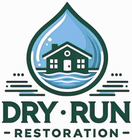Mold is a common household issue that can cause serious health problems and structural damage if not properly addressed. Homeowners often hear the terms “mold removal” and “mold remediation” used interchangeably, but they actually refer to different processes. Understanding the difference between the two can help you choose the best approach for dealing with mold problems in your home.
Understanding Mold Growth and Its Risks
Mold thrives in damp and humid environments, growing on surfaces such as walls, ceilings, and floors. It releases spores that can spread through the air, leading to respiratory issues, allergies, and other health problems. In addition to health concerns, mold can weaken building materials, causing costly structural damage. Effective mold management requires identifying the underlying cause of moisture and taking appropriate action to prevent recurrence.
What is Mold Removal?
Mold removal refers to the process of physically eliminating visible mold from a surface. This is often a temporary solution, as it does not address the root cause of the problem. Cleaning mold from walls, ceilings, and furniture with disinfectants or mold-killing agents can remove surface mold, but if moisture levels remain high, the mold can quickly return. Mold removal is usually effective for small infestations that have not penetrated deep into the materials.
What is Mold Remediation?
Mold remediation is a more comprehensive approach that involves identifying, containing, and eliminating mold at its source. This process includes assessing the extent of mold growth, removing contaminated materials if necessary, and using specialized techniques to prevent future outbreaks. Professionals use air filtration systems, antimicrobial treatments, and dehumidifiers to ensure mold does not return. Unlike simple mold removal, remediation provides a long-term solution by addressing both the mold and its underlying causes.
Key Differences Between Mold Removal and Mold Remediation
The primary difference between mold removal and mold remediation is their scope. Mold removal focuses on eliminating visible mold, while remediation goes deeper by tackling the moisture issue that allows mold to thrive. Another key difference is the effectiveness of each approach. Mold removal may provide a quick fix, but without resolving the source of moisture, the mold can return. Remediation, on the other hand, involves a complete assessment and long-term prevention strategies to stop mold from recurring.
The Process of Mold Remediation
Mold remediation starts with a thorough inspection to determine the extent of the infestation. Professionals use moisture meters, infrared cameras, and air quality tests to locate hidden mold and moisture sources. Once identified, containment measures such as plastic sheeting and negative air pressure are used to prevent spores from spreading. The next step is the removal of contaminated materials, including drywall, insulation, or carpets that cannot be salvaged. Surfaces are treated with antimicrobial solutions, and air filtration devices help eliminate airborne spores. After cleaning, moisture control measures such as repairing leaks, improving ventilation, and using dehumidifiers are implemented to prevent mold from returning.
When to Choose Mold Removal vs Mold Remediation
For minor mold issues on non-porous surfaces, mold removal may be sufficient. Small amounts of mold in areas like bathrooms or kitchens can often be cleaned using household disinfectants or commercial mold removers. However, if the mold covers a large area, recurs frequently, or is caused by hidden moisture problems, mold remediation is the better choice. Remediation ensures the mold problem is fully addressed and prevents future outbreaks, making it the best option for extensive or recurring mold growth.
The Role of Professional Mold Restoration Services
Mold restoration experts have the knowledge, tools, and experience to effectively remove mold and prevent it from returning. They follow industry standards for containment, removal, and air purification to ensure the home is safe and mold-free. Professional remediation services also provide a detailed assessment, helping homeowners understand the source of mold problems and how to prevent them. Hiring experts is recommended for large-scale infestations, severe water damage, or when mold is affecting HVAC systems and hidden spaces.
Frequently Asked Questions
Is mold removal something I can do myself, or do I need professional help?
If the mold growth is small and on a hard surface, you may be able to clean it using household mold removers. However, if the mold has spread to multiple areas, keeps returning, or is inside walls or HVAC systems, professional remediation is the best option.
How much time does mold remediation usually take?
The length of the remediation process depends on how severe the mold infestation is. Small mold problems may take a few days to resolve, whereas extensive mold damage may require a week or more, especially if structural repairs are needed.
Is mold likely to come back after treatment?
Mold can return if the source of excess moisture is not addressed. Mold remediation includes measures to control moisture, such as fixing leaks and improving ventilation, which help prevent mold from coming back.
Will my homeowner’s insurance cover mold remediation?
Insurance policies vary, but mold remediation is typically covered if the mold is a result of sudden and accidental water damage, such as a burst pipe. If mold develops due to long-term neglect or maintenance issues, it may not be covered.
What steps can I take to prevent mold from forming in my home?
To minimize the risk of mold growth, keep indoor humidity levels low, promptly repair leaks, ensure good air circulation, and use exhaust fans in bathrooms and kitchens. Regular maintenance checks can also help catch moisture problems early.
Conclusion
Mold removal and mold remediation are two different approaches to managing mold problems in a home. While removal provides a temporary fix by cleaning visible mold, remediation offers a long-term solution by addressing the root cause. Understanding these differences can help homeowners make informed decisions and protect their property from mold damage. Seeking professional mold restoration services ensures that mold is properly eliminated, reducing health risks and preventing future infestations.
